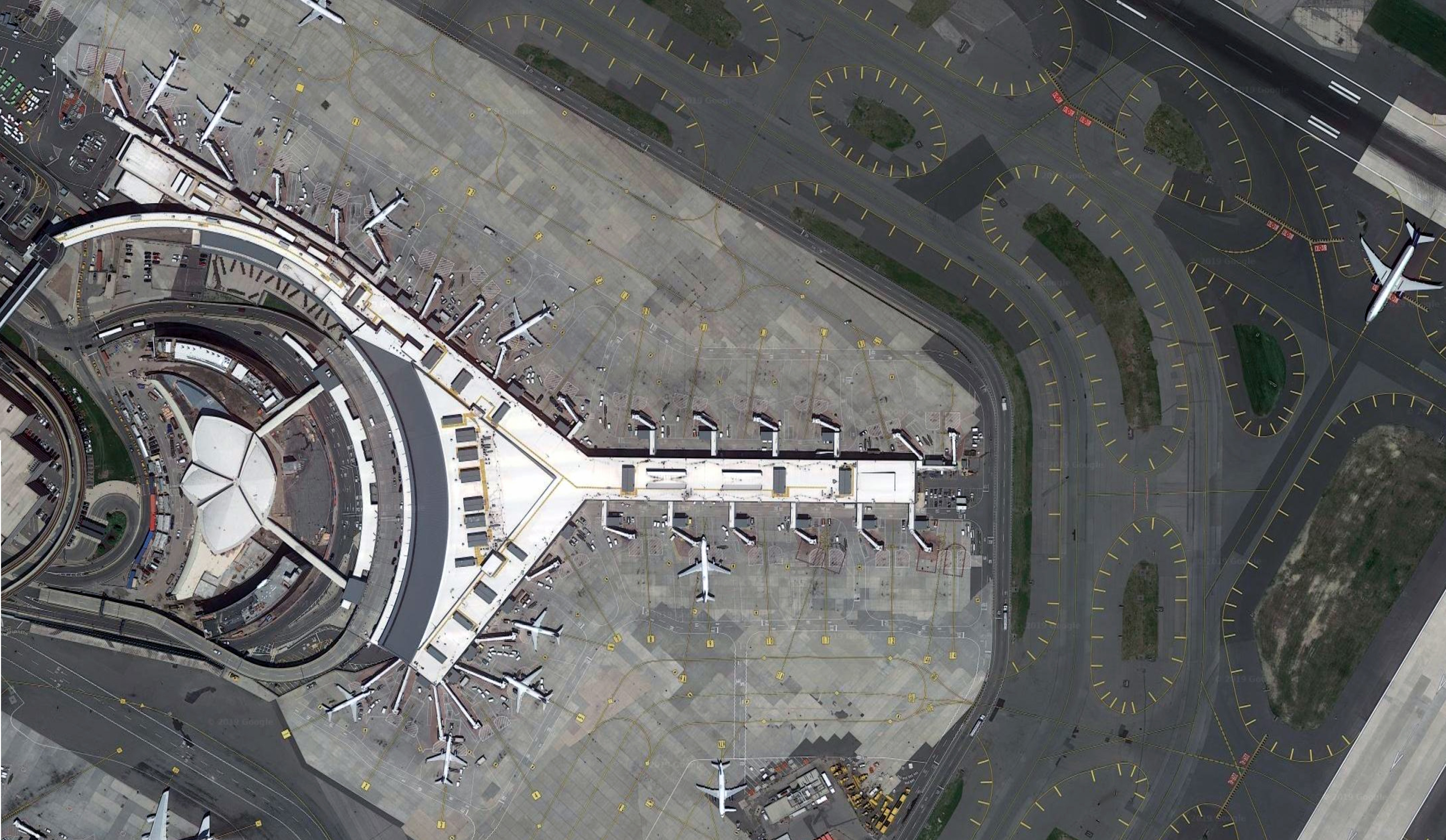
JFK International Airport
Project Manager
Terminal 5 and 5i
Project Manager/Engineer for a new 26 gate terminal. The project criteria included
the requirement to fuel all 26 A320 class aircraft at contact gates simultaneously.
Actual fueling rates at Terminal 5 while aircraft were being fueled at 40 psig
pressure at the wing fueling locations and found flowing at 220 gpm. Based on
this information, all three Terminal 5 pumping systems, one per main, were required.
The design included two fuel mains running parallel to the perimeter of the
Terminal 5 building. Each of the mains were interconnected at each end. An
underground piping manifold at Gate 10 was designed with isolation valve pits
to connect the three PANYNJ fuel distribution mains to the Terminal 5 twin
terminal fuel mains. The manifold was designed to have one fuel main supply
fuel to one inner fuel main from Gate 11 to Gate 26, a second fuel supply main
one outer fuel main from gate 11 to 26 and to have the third fuel supply main
feed the inner and outer fuel mains from Gate 10 to Gate 1 and from Gate 1 to
Gate 10. The inline isolation valve pits with cross connection valve pits inner
and outer fuel mains were included in the design to allow isolation of a section
of any fuel main for maintenance or for spill control.
A comprehensive fuel pressure surge analysis was performed. The results indicated
that surge suppression stations on each fuel main were required. Multiple surge
suppression stations were included in the design. Each station had above ground
surge suppressors in a 4-hour rated concrete enclosure close to the terminal
building with a 4-hour roll-up door. A low-pressure switch with an identity
module was included on each surge suppressor and connected to the emergency
Fuel Shutoff System (EFSO) wiring. The EFSO activation and reporting system was
based on fire alarm system components since fire alarm panels, identity modules,
signal amplification units and fire alarm activation stations with strobe lights
or FM approval for the PLC unit and needs knowledgeable personnel to
program/reprogram/troubleshoot the PLC unit. Each EFSO activation station with
its identity module is designed to transmit a code associated for the gate in
which it is installed. The fire alarm panel with communication links to the
Satellite Fuel Farm’s pump control system, to an offsite monitoring firm and to
the PANYNJ Fire Department Building for prompt accurate response to the vicinity
of the activated EFSO station. Each surge suppressors’ low pressure switch/identity
module was designed to report which surge suppressor and in which surge suppressor
station are at low pressure and needs attention.